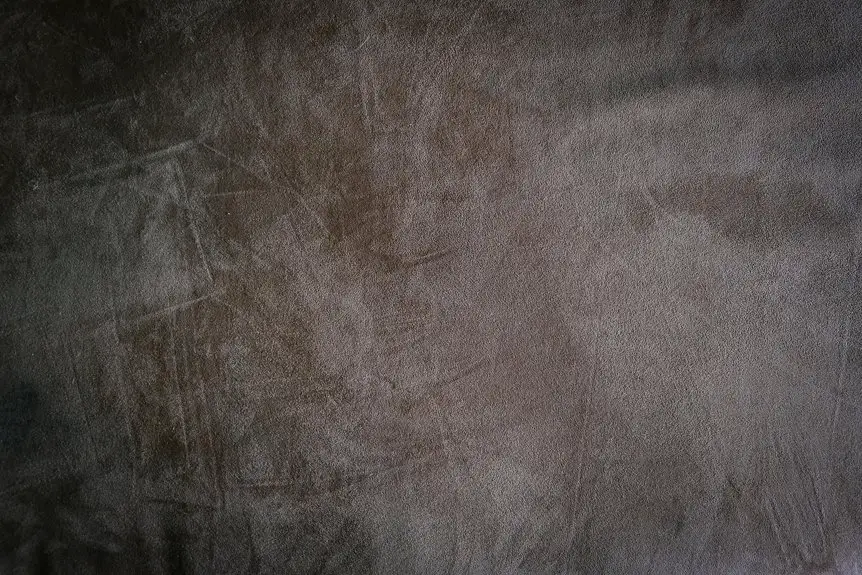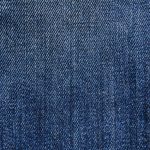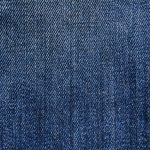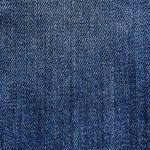You’ll find scuba suede fabric combines the soft, velvety feel of traditional suede with the flexible stretch and durability of scuba material. Made mainly from polyester and spandex, it resists wrinkles, holds vibrant colors, and offers water resistance for easy care. Its smooth, thicker texture provides comfort and stylish structure, perfect for activewear and fashion pieces. If you want to understand how it’s made and why it’s so popular, keep exploring this unique fabric’s qualities.
Table of Contents
Key Takeaways
- Scuba suede is a synthetic fabric blending polyester and spandex for stretch, durability, and a soft, velvety suede-like texture.
- It features a smooth, thick surface with excellent flexibility and wrinkle resistance, unlike traditional suede.
- The fabric is water-resistant and easy to clean, making it practical for activewear and outerwear.
- Scuba suede is created through tight knitting and brushing processes to achieve its unique plush feel.
- Popular in fashion, scuba suede offers comfort, structure, and vibrant color retention for versatile style options.
Definition and Characteristics of Scuba Suede
Scuba suede combines the smoothness of traditional suede with the stretchy, durable qualities of scuba fabric. When you touch it, you’ll notice a soft, velvety surface that feels luxurious against your skin.
Unlike regular suede, this fabric stretches, allowing it to move with you without losing its shape. It’s thick enough to provide structure but still lightweight, so it won’t weigh you down.
The fabric resists wrinkles and creases, keeping your outfit looking fresh throughout the day. You’ll also find that scuba suede holds vibrant colors well, making it a favorite for bold fashion statements.
Resistant to wrinkles and vibrant in color, scuba suede keeps your look fresh and bold all day long.
Its water-resistant nature means it handles light moisture better than regular suede, giving you more versatility in wear.
Materials Used in Scuba Suede Fabric
You’ll find that scuba suede fabric is mainly made from synthetic fibers like polyester and nylon.
These materials are often blended in specific ratios to achieve the fabric’s signature stretch and durability.
Understanding these blend ratios helps you know why scuba suede feels so smooth and resilient.
Synthetic Fiber Composition
Although it mimics natural suede’s texture, this fabric is primarily made from synthetic fibers like polyester and spandex. When you wear or work with scuba suede, you benefit from polyester’s durability and resistance to wrinkles and shrinking.
Spandex adds stretch and flexibility, making the material comfortable and form-fitting. These synthetic fibers are tightly knit, giving scuba suede its smooth, dense surface that resists pilling and fading.
You’ll also appreciate how this combination keeps the fabric lightweight yet sturdy, ideal for both fashion and upholstery. Because it’s synthetic, scuba suede dries quickly and maintains its shape well after washing.
Understanding this fiber composition helps you choose the right care methods and appreciate why scuba suede feels so unique compared to natural suede.
Blend Ratios Explained
The balance between polyester and spandex in scuba suede shapes its feel and performance.
Typically, you’ll find blends with about 85-90% polyester and 10-15% spandex. This ratio gives the fabric its characteristic stretchiness and durability while maintaining a smooth, suede-like texture.
If the spandex content is higher, the fabric becomes more elastic but may lose some firmness. Conversely, more polyester increases sturdiness but reduces flexibility.
Knowing these blend ratios helps you choose the right scuba suede for your project—whether you want a snug fit for activewear or a structured look for fashion garments.
Understanding this balance guarantees you get the ideal combination of comfort, resilience, and aesthetic appeal in your scuba suede fabric.
The Manufacturing Process of Scuba Suede
Since scuba suede combines the softness of suede with the stretchiness of scuba fabric, its manufacturing process involves a careful blend of materials and techniques.
You start by mixing polyester and spandex fibers to achieve the right balance of flexibility and durability. These fibers are knitted tightly to create a dense, double-knit fabric, giving scuba suede its characteristic thickness and stretch.
Next, a soft, suede-like texture is applied through a special finishing process called “brushing,” which raises the fabric’s surface fibers. This step guarantees you get that plush, velvety feel you expect from suede.
Finally, the fabric undergoes heat-setting to lock in shape and stretch, making it resilient and ideal for various garment designs.
This precise process results in scuba suede’s unique combination of comfort and style.
Differences Between Scuba Suede and Traditional Suede
Understanding how scuba suede is made helps highlight what sets it apart from traditional suede.
Unlike traditional suede, which is made from the underside of animal hide, scuba suede is a synthetic fabric crafted from polyester and spandex blends. This difference creates distinct textures and qualities.
When you compare the two, you’ll notice:
- Softness and Thickness: Scuba suede feels thicker and smoother, giving it a plush, luxurious touch.
- Stretch and Flexibility: The inclusion of spandex in scuba suede offers you excellent stretch, unlike the rigid nature of traditional suede.
- Durability and Maintenance: Scuba suede resists stains and wrinkles better, making it easier to care for in your daily life.
These contrasts make scuba suede a unique and versatile fabric choice.
Advantages of Using Scuba Suede Fabric
Although you might be familiar with traditional fabrics, scuba suede offers several advantages that make it stand out.
First, it’s incredibly durable and resists wrinkles, so you won’t have to worry about constant maintenance. You’ll also appreciate its smooth, stretchy texture that provides comfort and flexibility, making it ideal for active wear or form-fitting styles.
Unlike traditional suede, scuba suede is water-resistant, so it handles moisture better without damage. Plus, it’s thicker and provides more insulation, keeping you warm in cooler weather.
Its easy-to-clean surface means you can quickly remove stains without special treatments. Overall, when you choose scuba suede, you get a versatile, low-maintenance fabric that combines style, comfort, and practicality effortlessly.
Common Applications in Fashion and Design
When you explore fashion and design, you’ll find scuba suede popping up in a range of creative uses. This fabric’s smooth texture and stretch make it perfect for pieces that demand both comfort and style.
You’ll see scuba suede enhancing various garments and accessories, giving them a modern, luxurious edge.
Here are some common applications:
- Chic dresses and skirts: Its structure helps create flattering silhouettes that hold their shape.
- Stylish jackets and blazers: You can rely on its durability and sleek finish for outerwear that stands out.
- Trendy handbags and shoes: Designers love how scuba suede adds a soft yet sophisticated touch to accessories.
Using scuba suede, you can elevate your wardrobe with standout items that blend function and flair effortlessly.
Care and Maintenance Tips for Scuba Suede
To keep your scuba suede pieces looking their best, proper care is key. Always check the care label before cleaning.
Spot clean stains promptly with a damp cloth and mild detergent, avoiding harsh scrubbing that can damage the fabric’s texture. If machine washing is allowed, use a gentle cycle with cold water and place items in a mesh laundry bag to protect them. Avoid bleach and fabric softeners, which can harm the material.
Air dry your scuba suede garments flat to maintain their shape, steering clear of direct sunlight and heat sources. For storage, hang or fold them in a cool, dry place to prevent creasing.
Following these simple steps will help your scuba suede maintain its soft feel and vibrant look over time.
Environmental Impact and Sustainability Considerations
When choosing scuba suede, you’ll want to evaluate eco-friendly material options that reduce environmental harm.
Look for fabrics that support recycling or offer biodegradability to minimize waste.
These factors help you make a more sustainable choice without sacrificing style or function.
Eco-Friendly Material Options
Although scuba suede fabric offers a luxurious feel and durability, you might wonder how it aligns with eco-friendly material options.
While traditional scuba suede is synthetic, you can choose alternatives that reduce environmental harm without sacrificing style.
When shopping, look for fabrics that:
- Use recycled fibers, cutting down on waste and resource use
- Are produced with low-impact dyes, minimizing chemical pollution
- Come from brands committed to sustainable manufacturing practices
Recycling and Biodegradability
Since scuba suede is primarily made from synthetic materials, its recycling and biodegradability present unique challenges you should consider.
Unlike natural fibers, scuba suede doesn’t break down easily in the environment, which means it can linger in landfills for years.
Recycling options are limited because the fabric often combines different fibers, making it hard to separate and process.
However, you can reduce environmental impact by choosing scuba suede products designed for durability, so you use them longer before disposal.
When possible, look for brands that incorporate recycled content or take back programs to handle old garments responsibly.
Understanding these factors helps you make informed choices that balance the fabric’s benefits with its environmental footprint.
Popular Brands and Products Featuring Scuba Suede
If you’ve ever shopped for trendy activewear or stylish outerwear, you’ve likely encountered scuba suede without realizing it. This fabric’s smooth texture and structured feel make it a favorite among designers who want both comfort and style.
You’ll find scuba suede in pieces by brands that emphasize modern aesthetics and durability.
Look for scuba suede in:
- Lululemon’s sleek leggings and jackets that hug your body while offering flexibility
- Zara’s tailored blazers and skirts that add a polished yet edgy touch to your wardrobe
- Alo Yoga’s comfy yet chic hoodies and dresses perfect for casual days or workouts
When you wear scuba suede products, you’re choosing style that doesn’t sacrifice comfort or performance.
Frequently Asked Questions
Can Scuba Suede Fabric Be Waterproofed Effectively?
You can waterproof scuba suede fabric effectively by applying a suitable water-repellent spray designed for synthetic materials. Just make sure to follow the product instructions carefully for the best protection without damaging the fabric’s texture.
Is Scuba Suede Suitable for Upholstery Use?
You can use scuba suede for upholstery since it’s durable and soft, but keep in mind it may not be as breathable as natural fabrics. It’s best for low-traffic areas or accent pieces to keep it looking fresh.
How Does Scuba Suede Perform in Extreme Temperatures?
You’ll find scuba suede handles moderate temperatures well but may stiffen in extreme cold and become less breathable in intense heat. It’s best to avoid exposing it to harsh temperature extremes to maintain its texture and durability.
Can Scuba Suede Be Recycled or Repurposed?
You can recycle or repurpose scuba suede, but it depends on local facilities since it’s a synthetic blend. Consider upcycling it into accessories or home decor to extend its life and reduce waste creatively.
Are There Any Health Concerns When Wearing Scuba Suede Clothing?
You won’t face major health concerns wearing scuba suede clothing, but if you have sensitive skin, synthetic materials might cause irritation. Always check for allergies and guarantee proper ventilation to stay comfortable in your outfit.
- Tetron Fabric for Marine Applications: Durability and Use Cases - June 18, 2025
- Tetron Fabric for Outdoor Furniture: Weather Resistance and Care - June 18, 2025
- Tetron Fabric for Wall Coverings: Style and Application Tips - June 18, 2025







